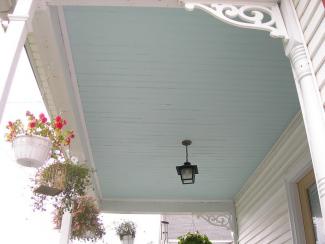
Traveling through South Carolina and Georgia’s Lowcountry region, you might notice a pattern. Many homes proudly showcase porch ceilings, doors, and window treatments painted a specific color blue.
The selection, many are surprised to learn, goes way deeper than a design preference.
The color symbolism honors many rich African spiritual traditions including honoring one Yoruba deity Iya Mapo.
The Gullah Geechee people who call the Lowcountry home believed the color blue would protect their families against evil spirits (known as “haints”) conjuring up the illusion of (uncrossable) water.
But that’s not all the appropriately named “haint blue” signifies.
In the 18th century, indigo plants produced coveted blue dye. Its production drove the economy of colonial-era South Carolina with a value that far exceeded cotton.
Its rich tones serve as a reminder of the atrocities committed against enslaved laborers on indigo plantations.
In spite of the historic wrongs perpetrated against their ancestors behind this rare dye, a reclamation movement is rising.
By resurrecting the for-a-time-forgotten textile craftsmanship, as well as Yoruba and Hoodoo spiritual traditions, and maintaining enduring rituals (i.e. painting a porch ceiling blue), residents hope to pay homage to the past in the present.